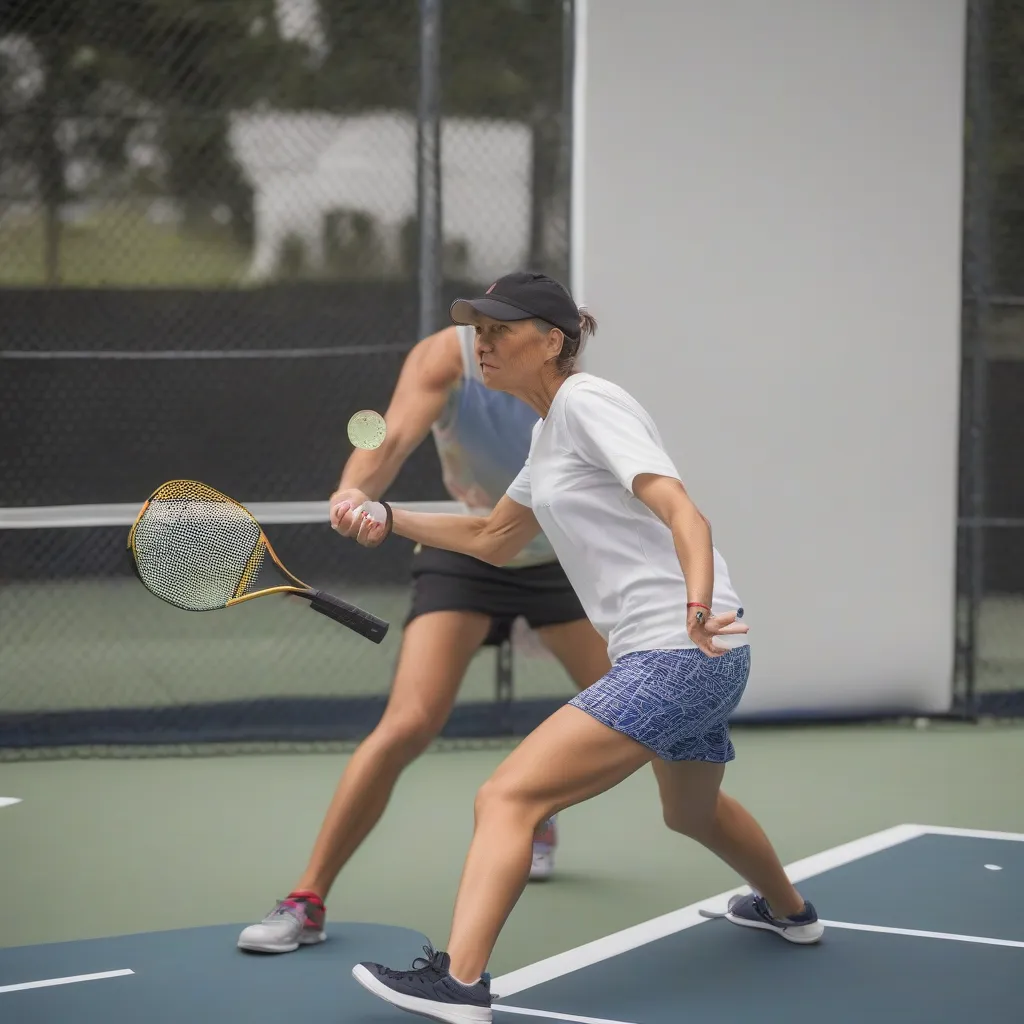Imagine this: you’re on the pickleball court, paddle in hand, ready to dominate. But your opponents seem to have an answer for everything. Their serves are untouchable, their dinks are deadly, and their volleys are vicious. How do you turn the tide and reclaim control? The answer lies in understanding and neutralizing your opponents’ strengths. Mastering this art is the key to unlocking your pickleball potential and achieving victory.
Identifying Your Opponents’ Strengths
Before you can neutralize your opponents’ strengths, you need to identify them. Watch their game closely during warm-ups and the first few points. Are they aggressive net players? Do they favor a powerful drive or a deceptive drop shot? Are they consistent or prone to unforced errors? Some key areas to observe include:
Serve and Return
- Serve type: Do they have a strong serve, or do they rely on placement? Is it a topspin, slice, or flat serve?
- Return strategy: Are they aggressive returners, or do they prefer to reset the point with a deep return?
Groundstrokes
- Forehand/Backhand: Which is their dominant side? Do they have a powerful drive or a controlled slice?
- Footwork: Are they quick and agile, or do they struggle to cover the court?
Net Play
- Volleying: Are they strong volleyers? Do they prefer to attack or defend at the net?
- Dinking: Are their dinks precise and controlled, or do they tend to pop the ball up?
Neutralizing the Strengths
Once you’ve identified your opponents’ strengths, it’s time to develop a strategy to neutralize them. This is not about exploiting weaknesses, but rather about minimizing their effectiveness and forcing them out of their comfort zone.
Targeting Weaknesses
While the focus is on neutralizing strengths, exploiting weaknesses can be a natural byproduct. If an opponent has a weaker backhand, directing shots to that side can force errors or weak returns. However, don’t become predictable; mix up your shots to keep them guessing.
Disrupting Rhythm and Timing
A powerful strategy is to disrupt your opponents’ rhythm. Vary the pace and spin of your shots. If they are used to fast-paced rallies, try slowing the game down with dinks. If they rely on a consistent rhythm, throw them off with a sudden change of pace.
Exploiting Court Positioning
Strategic court positioning is crucial. If your opponents are strong at the net, try lobbing the ball over their heads or hitting passing shots. If they are weaker at the net, force them forward with drop shots and then punish them with an overhead.
Doubles Strategies
In doubles, communication and teamwork are key. Develop signals with your partner to coordinate attacks and cover the court effectively. If one opponent is significantly stronger, focus on isolating the weaker player and forcing them to make plays. You can learn more about doubles strategies by exploring the article on how to strategically utilize your team’s strengths in doubles.
Adapting Your Game
Neutralizing your opponents’ strengths often requires adapting your own game. This might involve playing a more defensive style, focusing on consistency over power, or incorporating new shots into your arsenal. Don’t be afraid to step outside your comfort zone and try new things. For example, if you’re playing against taller opponents, adjusting your strategy can be beneficial. Check out our article on pickleball strategies for overcoming taller opponents for specific tips.
Mental Game
Pickleball is as much a mental game as a physical one. Stay positive and focused, even when things aren’t going your way. Don’t get discouraged by your opponents’ strengths; instead, view them as challenges to overcome.
 Neutralizing Opponents' Strengths in Pickleball
Neutralizing Opponents' Strengths in Pickleball
Conclusion
Neutralizing your opponents’ strengths is a crucial element of successful pickleball strategy. It requires careful observation, strategic thinking, and the ability to adapt your game. Remember, it’s not just about hitting winners; it’s about playing smart and making it difficult for your opponents to play their best game. By mastering these techniques, you’ll be well on your way to becoming a more formidable and victorious pickleball player. What are your go-to strategies for neutralizing tough opponents? Share your tips and experiences in the comments below! Explore more strategic insights by checking out our articles on strategies for playing singles in pickleball, best strategic practices for playing defensive pickleball, and countering spin and power in pickleball strategies.
- Bond, Payton (Author)
- English (Publication Language)
- Baker, Joe (Author)
- English (Publication Language)
- Anderson, Brian (Author)
- English (Publication Language)
- Carnot, Prem (Author)
- English (Publication Language)
- Palcic, Lisa (Author)
- English (Publication Language)
- Callahan, John (Author)
- English (Publication Language)
- Hall, Dennis (Author)
- English (Publication Language)
- Baker, Mr. Joe (Author)
- English (Publication Language)
- Foster, Blake (Author)
- English (Publication Language)
- Satka, David (Author)
- English (Publication Language)









